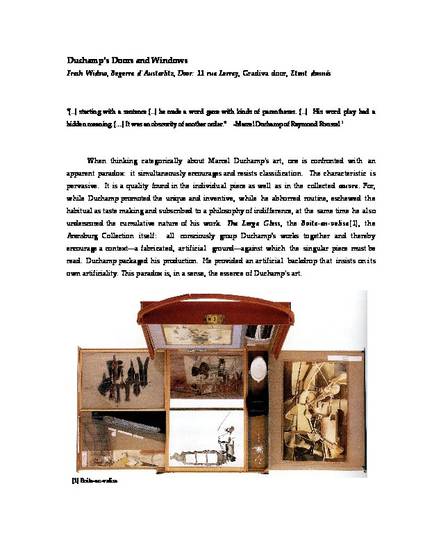
Presentation
Duchamp's Doors and Windows
Architecture Conference Proceedings and Presentations
Document Type
Conference Proceeding
Disciplines
Publication Date
1-1-2006
Conference Title
34th Annual European Studies Conference
Conference Date
October 2006
Geolocation
(41.2523634, -95.99798829999997)
Abstract
When thinking categorically about Marcel Duchamp's art, one is confronted with an apparent paradox: it simultaneously encourages and resists classification. The characteristic is pervasive. It is a quality found in the individual piece as well as in the collected œuvre. For, while Duchamp promoted the unique and inventive, while he abhorred routine, eschewed the habitual as taste making and subscribed to a philosophy of indifference, at the same time he also underscored the cumulative nature of his work. The Large Glass, the Boite-en-valise[1], the Arensburg Collection itself: all consciously group Duchamp’s works together and thereby encourage a context—a fabricated, artificial ground—against which the singular piece must be read. Duchamp packaged his production. He provided an artificial backdrop that insists on its own artificiality. This paradox is, in a sense, the essence of Duchamp's art.
Language
en
File Format
application/pdf
Citation Information
Daniel Naegele. "Duchamp's Doors and Windows" Omaha, NE, United States(2006) Available at: http://works.bepress.com/daniel_naegele/48/
